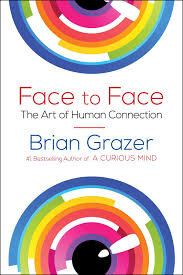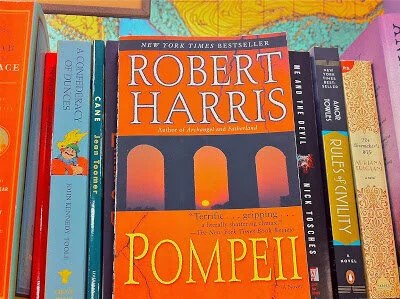Adults think it is cute to see little kids parade around like grown-ups and don’t mind spending the money to buy one of the various sets available at one of the companies that sell them. You can, for example, get the “shiny basic set” offered by Rhymeuniversity.com for $14.95, which includes the shiny gap and gown and tassel, or the “matte deluxe package” for $25.95, which includes a cloth matte cap and gown, tassel, graduate sash, ring, diploma with matching invitation and program cover.
But why, at American high school and college graduations, are the grown-ups — the students, faculty, honorary degree recipients — wearing caps and gowns during the ceremony, often in an outside venue under a withering sun or in a stifling auditorium jammed with guests?
And why are students, many of whom have forked out many tens of thousands of dollars to get a college degree, asked to spend more to rent or purchase a cap and gown for their graduation ceremony? The cost is significant; caps and gowns for rent can cost around $100 and much more to buy. The University of Texas at Arlington, for example, has an order form online for students that includes this section:
Doctoral attire, custom-made for purchase, can cost close to $1,000. Take George Washington University, for example:
- Doctoral Gown, Tam & Hood — Rental$145.00
- Doctoral Gown — Custom Purchase$557.60
- Doctoral Hood — Custom Purchase$157.00
- Doctoral Tam — Custom Purchase$108.88
Some schools require graduating students to wear academic dress for graduation as explained on the Arizona State University website:
Students are required to wear caps, gowns and tassels when participating in the University Commencement Ceremony as well as any college or special interest convocation event.
Other schools just strongly urge that students follow the rule, as explained on the Harvard University website:
University Cap & Gown
Shoes and other articles of visible apparel worn by graduates should be of dark colors that harmonize with the academic costume. We recommend wearing light breathable clothing under your regalia.
Nothing else should be worn on the academic gown.
The Commencement ceremony has great significance as a celebration of your academic achievement and membership of the graduating class. We encourage you to wear clothing or other items that celebrate your heritage and identity at the Commencement Celebration on Wednesday evening.
When did graduates start wearing caps and gown?
The tradition goes back to 12th century Europe, when the first universities were founded. According to Columbia University, gowns and hoods were worn by clergy, and their students adopted the same garb. For one thing, the gowns provided warmth in unheated buildings, and served as a way to set the student apart from his fellow citizens, hence the perennial controversy between “Town and Gown.”
A history of academic regalia by Colorado State University notes that hoods covered the shaved heads of the clergy — until “superseded for that purpose by the skull cap.” It says:
In England, in the second half of the 14th century, the statutes of certain colleges forbade “excess in apparel” and prescribed the wearing of a long gown. In the days of Henry VIII of England, Oxford and Cambridge first began prescribing a definite academic dress and made it a matter of university control even to the extent of its minor details.
English academic traditions followed the American colonists, according to this 2009 paper on academic dress in American universities by David T. Boven. He wrote:
Some schools, such as Princeton University in New Jersey, Brown University in Rhode Island, and Columbia University in New York, dressed their scholars in academic gowns from the 1700s. Princeton mandated that all students except freshmen wear academic dress in 1755. Brown University — also founded during the American colonial period — first used an academic costume shortly after the colonies gained independence. On 13 March 1786, the Corporation of the University decreed that ‘in future, the Candidates for Bachelors degrees, being Alumni of the College should be clad at Commencement in black flowing robes & caps similar to those used at other Universities …’
During the period immediately after the Civil War, however, the uses of academic dress in the United States were in sharp decline. In the opinion of Gardner Cotrell Leonard, writing thirty years later, the cause was an Anglophobic distaste for all things British, which would surely have included academic dress.
But change came, in part driven by students, and because of efforts by university leaders to adopt a standard academic dress system “to provide an outward equality among schools,” Boven wrote.
In 1894, according to Columbia University’s history of academic garb, an American Intercollegiate Commission met at the school to standardize the style and color for robes and hoods (though Harvard opted out). It says:
At that time it was decided that all robes would be black; bachelors’ gowns to be made of worsted stuff with pointed sleeves; masters’ gowns of silk with long closed sleeves; doctors’ gowns faced with black velvet with three bars across the sleeves. Hoods were made of the same materials as the gowns, the length varying with the degree. Only the lining of the hood indicated the university — for Columbia, light blue with a white chevron. The border color indicated the academic discipline in which the degree was earned.
Boven wrote:
The wealthy trust-fund students graduating from an American university would dress the same as a scholarship student with only one suit. Because they were equals in academic terms, they would also be equal in their vesture. The opposing view was that held by Stanford University president David Jordan in 1901 that medieval ceremonies should not be articially revived.
Over years, the academic regalia changed, with colors for different academic disciplines and other distinctions made by various committees. The American Council on Education in 1932 appointed a panel to review the academic code that was approved in 1895, and it created a new code for academic garb. In 1959, the council again appointed a “Committee on Academic Costumes and Ceremonies,” and it made several revisions, and in 1986, Colorado State’s history says, the committee “updated the code and added a sentence clarifying the use of the color dark blue for the Doctor of Philosophy (PhD) degree.”
And some schools just decided to do their own thing. Today, academic dress is distinctive by university, but there are recommendations from the American Council on Education, a nonprofit that is the major coordinating body for American colleges and universities.
[The defiant, the funny and the touching college commencement speeches of the week]
For example, students earning bachelor’s degrees at a graduation should wear a gown with pointed sleeves, and it should be closed; master’s degree recipients should wear gowns with oblong sleeves. Black gowns are recommended, and gowns for the bachelor’s or master’s degrees are untrimmed, but, for the doctor’s degree:
“[T]he gown is faced down the front with black velvet; three bars of velvet are used across the sleeves. These facings and crossbars may be of velvet of the color distinctive of the disciplines to which the degree pertains, thus agreeing in color with the binding or edging of the hood appropriate to the particular doctor’s degree in every instance.
There are more choices than ever in the cap and gown business. Now for sale are gowns made entirely from recycled plastic. Andfashion designers are in the graduation gown business.
Kings College London has on its website the various gowns and hoods created by designer Vivienne Westwood, with, according to the school’s website, “a unique feature,” the King’s College London lion button on each shoulder.

























